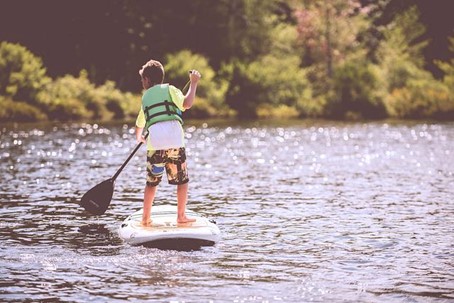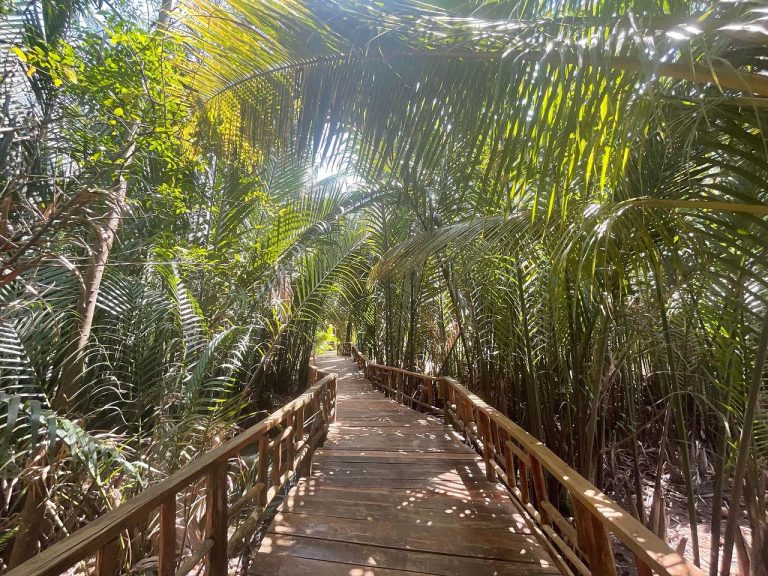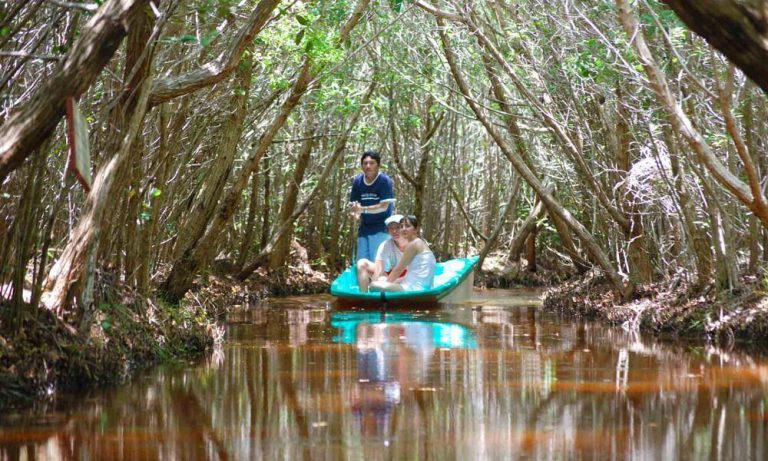Travel and destinations
Author: Oranne Davoust
Why should you discover the mangrove?
Do you know the mangrove? No? Yet the mangrove is one of the most fascinating ecosystems on our planet. At first sight, the mangrove may be less attractive than a sandy beach, but it conceals many secrets that make it a step not to be missed during your travels.
Indeed, the mangrove is a necessary element of our marine ecosystem. It is home to many species that take advantage of the atypical look of this plant to nest. It is also a bulwark against global warming.
The mangrove represents a real treasure in terms of heritage, ecology, and environment. Unfortunately, it is now threatened, and its preservation is an issue for the years to come.
If you want to know more, we invite you to read or read again our article on the mangrove to learn more about this fascinating ecosystem.
How to combine mangrove discovery and travel?
The mangrove is located only on the coast of some tropical areas. Whether you plan a trip to Africa, Asia or South America, you can always dedicate a moment to the discovery of the mangrove.
An ideal moment to slow down and take the time to observe. The mangrove reconciles perfectly with the lovers of slow tourism and nature. Indeed, to preserve these ecosystems as well as possible, it is strongly recommended to practice the least noisy activities possible (kayak, paddle, pedal boat). For those who would like to get their hands dirty, you can also, on certain occasions, participate in a mangrove planting activity.
For the sportsmen, the contemplative, the nature lovers, the curious and the responsible travelers, the mangrove should delight more than one. So don’t let the confusing appearance of the mangrove swamp forests scare you away and let the uniqueness and fragility of this ecosystem surprise you.
On your way to Africa

The African continent is full of opportunities for tourism initiatives centered around the mangrove. This discovery can easily be combined with other activities that will provide a truly immersive cultural experience.
In Senegal, the Bird Island located in the Saloum Delta is an area of incredible biodiversity. Classified as a World Biosphere Reserve in 1981 and a UNESCO World Heritage Site in 2011, it is one of the largest mangrove reserves in Africa. The visit of the Delta is done mainly by dugout. In order to observe the different species of birds, the best option is to bring binoculars and patience to better appreciate this ornithological discovery.
A little further in the Delta, you can stay in the village camp of Coubalan. This initiative allows you to share the daily life of the inhabitants: visit the village, dugout canoe rides in the mangrove forests and overnight in a hut overlooking the bolongs. This tourism initiative is perfect for travelers who want to participate in community projects.
Benin and Tanzania are also great destinations for mangrove discovery, whether it’s a visit to an ornithological site, a boat trip in the heart of Adounko in Benin or a paddle board tour in Tanzania.
Tanzania is also an ideal place to discover reserves and mangrove forests. The discovery of the Jozani Chwaka Bay National Park is a good alternative for those who want to test their hiking skills. For those who wish to mix the discovery of biodiversity with local customs, aim for an immersion in the heart of a typical village in the Jozani forest.
You can then embark towards Madagascar. Here, you can also enjoy a ride in a traditional dugout canoe and discover the protected mangrove area of the NGO Bel Avenir in the fishing village of Tsongoritelo. Don’t hesitate to make the understanding of the mangrove more real by learning how to plant young mangrove shoots accompanied by a local guide.
Discovering Asia

For this stage, you can take a break in Cambodia, in the southwest of the country in the nature reserve of Peam Krasaop. This sanctuary has a unique mangrove ecosystem covering several hundred hectares. Venture out on the wooden paths on stilts to discover this incredible preserved species. Then climb the 15-meter tower to see one of the most beautiful views of the sanctuary.
This sanctuary represents a good introduction, you can visit at your own pace or rely on the skills of local guides to accompany you.
For those who would like to observe the mangroves along the water, and still near the sanctuary, do not hesitate to rent a kayak to observe from another angle this atypical place.
You can also choose a more relaxing option with accommodations in the heart of the mangrove forests. Here, bungalows located on the banks of the Teuk Chou River, facing the Bokor National Park.
There are mangrove forests elsewhere on the Asian continent. Like in Vietnam where you can embark for an afternoon on a boat to admire the landscapes of the Mekong Delta, or in the Philippines for a trek or even to stay in a community bungalow in Thailand.
Destination Central and South America and the Caribbean

Why not Mexico to begin?
In El Ejido de San Crisanto in the Yucatán, there is the community of Salt and Coconut, whose mangrove is a must-see. The mangrove of San Crisanto is recognized as one of the best preserved in the region. This place represents a real beautiful hope!
In Mexico the initiatives are rather numerous, and you will be able to find there for all the tastes. Still in San Crisanto, go to the heart of the mangroves on board a typical Mexican gondola.
In Calkiní, near the Ria Celestun reserve, you can sail on a kayak or visit the crocodile farm and enjoy a guided tour to better understand the role of mangroves.
Nearby you can stay at the Carey Ecotourism Center. This is an ecotourism cooperative that contributes to the conservation of wetlands and the reforestation of mangroves.
Whether in Costa Rica, Panama, Honduras, Colombia or Martinique, you will always find accommodations and activities where mangroves are synonymous with preservation and sharing.
How can the traveler play a role in the preservation of the mangrove?
By simply participating in an activity around the mangrove, you are already acting for its preservation. By showing an interest in a tourist activity based on the development of the mangrove, you participate in its preservation.
You can also participate in the plantation but be careful to do it with professionals.
Do not hesitate to take pictures, to tell your experience, to exchange with your relatives and encourage them to discover this ecosystem. You will thus become true ambassadors of the mangrove.
How to find an activity that really participates in the preservation of the mangrove?
Get in touch with local tourism professionals to make sure that these initiatives are respectful of the environment and local communities, like our partner Eco-Benin.
You can also visit the Vaolo platform, specialized in sustainable accommodation and activities.
Don’t hesitate to contribute to this article by sharing other responsible initiatives!
Subscribe to the travel newsletter from our collaborative booking platform Vaolo to find out what’s new, follow our explorers and receive tips for more conscious travel.
The use of the masculine gender has been adopted for ease of reading and has no discriminatory intent.
© 2024 All rights reserved. Village Monde.
By continuing to use the site, you agree to our privacy and cookie policy
I accept